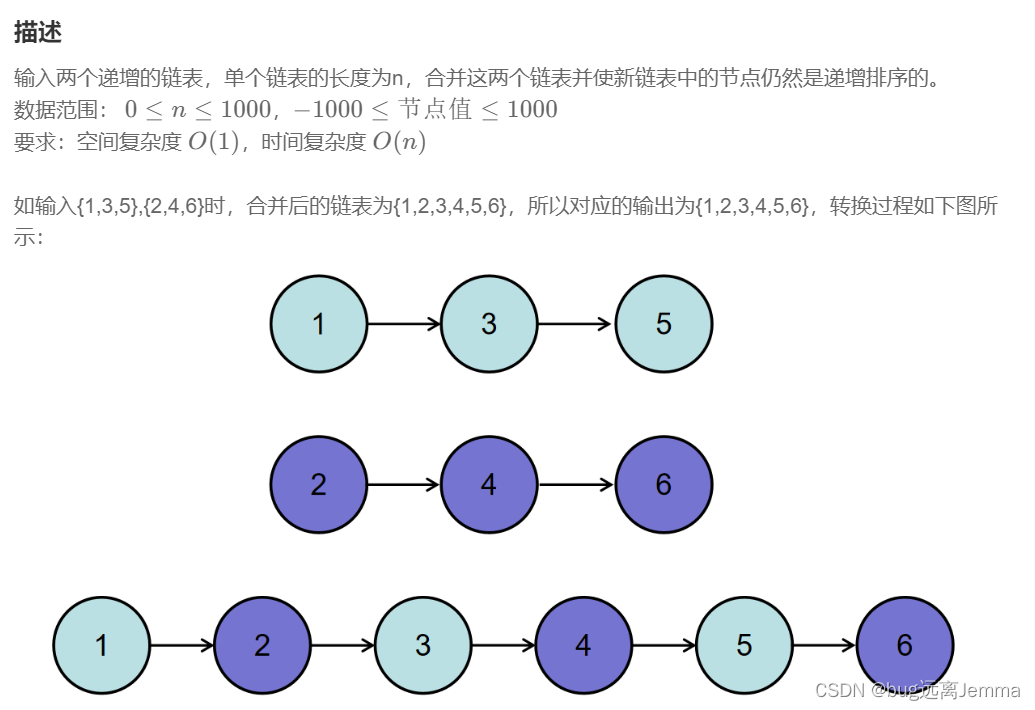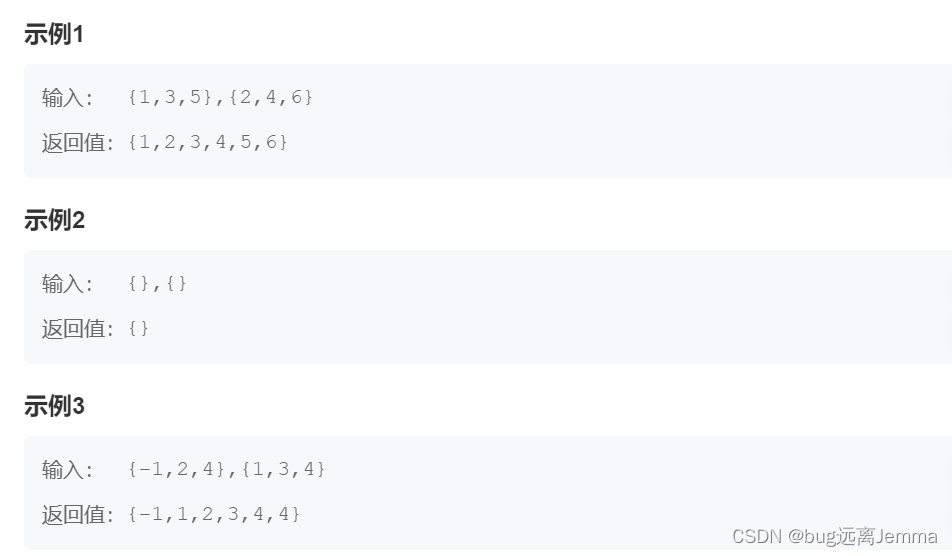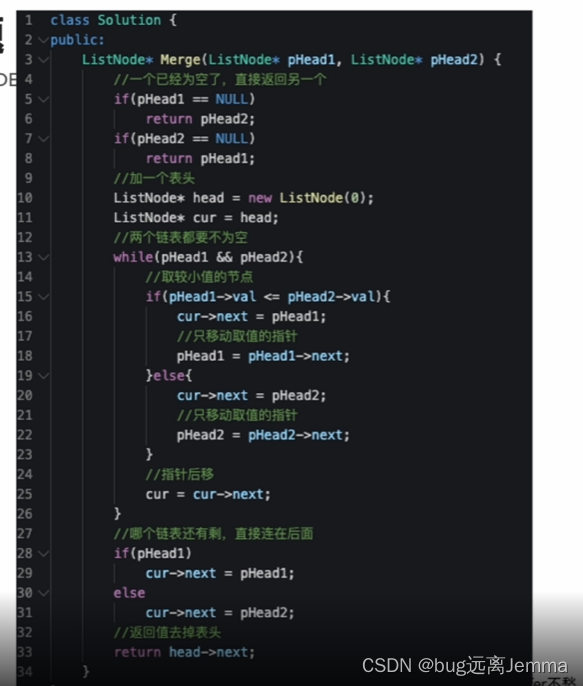题目
思路
这个题目大逻辑比较简单,就是一个比较和穿插,但细节上要考虑清楚,可以画个图模拟一下。我这里是设置将两个链表拆开组成一个新的链表,这样不需要占用新的空间。两个指针对应节点的值进行比较,那个节点值较小,就将这个节点拿下来放到新链表的末尾(想象拆两条手链),另一个链表不动,这样一轮下来就能按大小顺序将节点依次拆开组成一个新的链表。
代码
/*** struct ListNode {* int val;* struct ListNode *next;* ListNode(int x) : val(x), next(nullptr) {}* };*/
#include <cstddef>
class Solution {
public:/*** 代码中的类名、方法名、参数名已经指定,请勿修改,直接返回方法规定的值即可** * @param pHead1 ListNode类 * @param pHead2 ListNode类 * @return ListNode类*/ListNode* Merge(ListNode* pHead1, ListNode* pHead2) {// write code here//如果一方为空,则直接返回另一方if(pHead1==NULL){return pHead2;}if(pHead2==NULL){return pHead1;}ListNode * pHead3=NULL;ListNode * newHead;//pHead3==NULL是最初的时候while(pHead1 && pHead2){if(pHead1->val < pHead2->val){if(pHead3==NULL){pHead3=pHead1;newHead=pHead3;}else {pHead3->next=pHead1;pHead3=pHead3->next;}pHead1=pHead1->next;}else {if(pHead3==NULL){pHead3=pHead2;newHead=pHead3;}else {pHead3->next=pHead2;pHead3=pHead3->next;}pHead2=pHead2->next;}}//如果比较完之后某一队还有剩余,则直接将剩余的部分插到队尾if(pHead1){pHead3->next=pHead1;}if(pHead2){pHead3->next=pHead2;}return newHead;}
};
后记
我上面的pHead3==NULL部分的逻辑是为了通过比较来获取链表的第一个元素,因为第一个元素跟后面的不一样,不能统一用next。 而根据官方的方式 ,可以预先设置一个表头,这样的话就不需要单独考虑第一个元素了。只需要返回的时候再把添加的这个表头去掉就可以了,很妙,记录一下。



)

)








)


)




